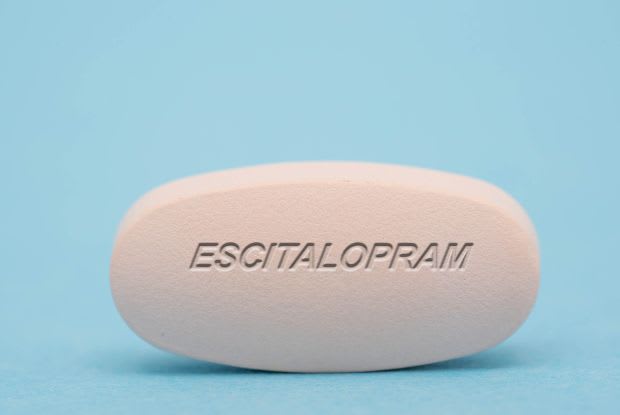Escitalopram for Anxiety vs Depression: What to Know Before You Start
Escitalopram for Anxiety vs Depression: What to Know Before You Start
Table of Contents
II. What Are the Main Escitalopram Uses?
III. Taking Escitalopram for Depression
IV. Taking Escitalopram for Anxiety
V. What If You Have Both Anxiety and Depression?
VI. Side Effects and Considerations
VII. How Long Will You Need to Take Escitalopram?
VIII. Special Populations and Precautions
If you’ve been prescribed escitalopram, chances are you're dealing with anxiety, depression, or sometimes both. It’s a commonly prescribed anxiety and depression medication, and many people use it as part of a longer-term treatment plan. But what exactly is escitalopram doing in your body? And does it work differently depending on whether you’re treating anxiety or depression?
Let’s break it down in simple terms: what escitalopram uses include, how it works, how it treats anxiety compared to depression, and what you should expect when taking it.
What is Escitalopram?

Escitalopram is a selective serotonin reuptake inhibitor (SSRI). That means it increases serotonin levels in your brain. Serotonin helps regulate several aspects of behavior, including:
- Mood
- Memory
- Anger
- Fear
- Stress response
- Addiction
- Appetite 1
Escitalopram is taken orally once a day, with or without food. It starts working gradually, and you typically need to take escitalopram for around 6 weeks before noticing the full effects. 2
If you’re comparing SSRI medications, take a look at how escitalopram compares to sertraline, another SSRI.
What Are the Main Escitalopram Uses?
FDA-approved escitalopram uses include:
- Major depressive disorder (MDD) in adults and children 12 years and older
- Generalized anxiety disorder (GAD) in adults and children 7 years and older 1
But escitalopram uses go beyond just these two diagnoses. Doctors may prescribe it off-label for panic disorder, social anxiety, obsessive-compulsive disorder (OCD), and even post-traumatic stress disorder (PTSD). This is why it’s considered a versatile anxiety and depression medication for different needs. 1
The fact that escitalopram uses include both anxiety and depression can make it feel like a catch-all medication, but the way it's prescribed and how people respond to it can vary depending on which condition is being treated.
Taking Escitalopram for Depression
When treating depression, escitalopram focuses on helping relieve persistent sadness, low energy, and loss of interest in daily life. The starting dose is usually 10 mg per day, with the option to increase to 20 mg if needed. 1
People often notice improvements in things like sleep and appetite before they feel a lift in overall mood. It can take several weeks to feel better, and that’s normal. If nothing changes after 6 to 8 weeks, your doctor may reassess your dosage or suggest another treatment option. 3
Escitalopram use for depression is often part of a larger treatment plan that includes therapy, lifestyle adjustments, or support for chronic stress and other triggers.
Taking Escitalopram for Anxiety
When used for anxiety, escitalopram focuses on reducing symptoms such as excessive worrying or irritability. The standard dose is 10 mg per day. 1
Some people report that their anxiety gets slightly worse during the first week or two. That’s not unusual and usually settles down as your body adjusts to the medication. 3
Escitalopram for anxiety may help with:
- Excessive worry
- Restlessness or feeling on edge
- Physical symptoms like muscle tension or trouble sleeping 1
Unlike fast-acting medications, escitalopram is a long-term treatment option. It's meant to be taken consistently, not just when symptoms flare up. For some people, the benefits build slowly over time.
What If You Have Both Anxiety and Depression?
It’s not uncommon to have symptoms of both anxiety and depression at the same time. 4 In those cases, escitalopram may be used to target both sets of symptoms. Since escitalopram uses include both conditions, using one anxiety and depression medication can simplify treatment and reduce the need to juggle multiple prescriptions.
That said, no single medication works the same for everyone. Regular follow-up is important to adjust the dose, monitor for side effects, and figure out if the medication is helping.
Side Effects and Considerations
Although escitalopram uses are broad, it can cause side effects whether you’re using it for anxiety or depression, especially during the first few weeks. Common ones include:
- Nausea
- Headache
- Sleep changes (either drowsiness or insomnia)
- Sexual side effects (like reduced libido or difficulty reaching orgasm)
- Increased sweating
- Feeling dizzy or restless 1
Most side effects improve within a few weeks. 3 If they persist or affect daily life, talk to your doctor about adjusting your treatment plan or exploring other anxiety and depression medications.
In rare cases, escitalopram may cause more serious side effects, like serotonin syndrome or QT prolongation (a heart rhythm issue) when combined with other medications. It can also cause withdrawal symptoms if stopped suddenly, which is why it should always be tapered off gradually. 1
How Long Will You Need to Take Escitalopram?
How long you stay on escitalopram depends on your condition, how long you’ve had symptoms, and how severe those symptoms are. Some people only need it for several months, while others stay on it longer to prevent symptoms from coming back. If you start feeling better, it’s important to talk with your doctor before making any changes. They can review your progress, discuss whether you still need to take escitalopram, and help you weigh the pros and cons of continuing.
If you both decide it’s the right time to stop, your doctor will create a gradual taper plan. Slowly lowering the dose over several weeks helps your body adjust and reduces the chance of withdrawal symptoms. Never stop this medication suddenly on your own, since doing so can cause uncomfortable side effects. 1
Special Populations and Precautions

Some groups may need extra monitoring or dose adjustments when using this anxiety and depression medication:
- Older adults: Risk of low sodium (hyponatremia) and heart rhythm issues.
- Pregnant or breastfeeding individuals: Escitalopram can pass through the placenta and into breast milk, so doctors usually weigh the benefits and risks before prescribing it.
- People with liver or kidney problems: The dose may need to be lowered based on how the body processes the drugs. 1
There are also potential interactions with other medications, especially other drugs that affect serotonin or prolong the QT interval. Because escitalopram use often involves long-term treatment, drug interactions are also worth discussing with your doctor. 1
Bottom Line
Escitalopram uses include treating both anxiety and depression, making it a practical choice when both conditions overlap. As an anxiety and depression medication, it helps balance serotonin in the brain, which can lead to steadier moods and reduced anxious thoughts over time.
While it can be a helpful part of recovery, it works best alongside other supports like therapy, stress management strategies, and regular check-ins with your healthcare provider. Being aware of what to expect can make the process less intimidating and help you stick with treatment long enough to see results.
If you're starting escitalopram or thinking about it, talk with your healthcare provider about your goals, concerns, and what to expect during the first few weeks of treatment.
References
- Landy, K., & Estevez, R. Escitalopram
- NHS About escitalopram
- National Alliance on Mental Illness Escitalopram
- Kalin, N. H. The critical relationship between anxiety and depression
